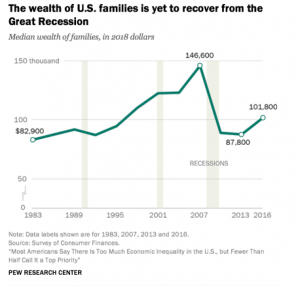Using a similar set of statistics as some of my peers, I thought about the topic of sustainability, and so a question I asked myself is: what’s in my environment that I can potentially reuse. Two types of material I come to find I use often include: glass especially when I think of my phone, what I use to drink, windows etc. The second one I often use is metal whether that be my phone, my car, my speaker etc. From 1960-2018, the epa estimates that the total change in glass recycling amounted to approximately: 2,960,000 tons. In that same time stretch, total change in the amount of metal recycled amounted to 8,670,000 tons. The growth factor for glass was about 30.6 and for metal it was about 174.4. The Percentage Change for glass is then: 3060% and for metals it was 17440%. When calculating the rate of change for glass: 2.96 x 10^6/58= 51034.48 tons more of glass was recycled per year and for metals it was: 8.76 x 10^6/58= 151034.48 tons more of metal recycled per year.
Glass recycling on the surface may sound like a good idea, but I decided to dig a little deeper into the materials recycling controversy surrounding its overall utility. According to various websites disputing the overall eco-friendliness of the material, glass is “endlessly” recyclable yet bottles/jars etc. require more energy to manufacture and then recycle and process into sand or reprocess into reusable glass than it takes to reuse plastic. However, plastics’ lifetime utility decreases after a few years whereas glass according to some websites is repeatedly reusable. According to one source, for 10% of broken down glass getting recycled (per year) total energy costs to break it down reduces by 3%. This controversy makes me reevaluate the short-term and long term impacts, in other words, the opportunity cost not just on the good itself, but the lifetime impact of the consumption of the good and its future ramifications on an interconnected issue like carbon emissions.
Works cited:
https://www.epa.gov/facts-and-figures-about-materials-waste-and-recycling/national-overview-facts-and-figures-materials#composting
https://earth.org/glass-bottles-environmental-impact/
https://www.britglass.org.uk/our-work/recycling
https://cen.acs.org/materials/inorganic-chemistry/glass-recycling-US-broken/97/i6
https://earth911.com/business-policy/how-many-times-recycled/






